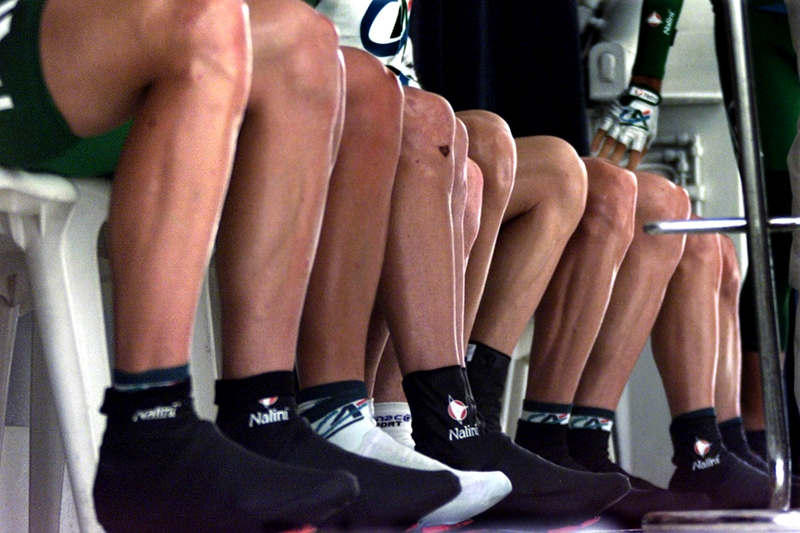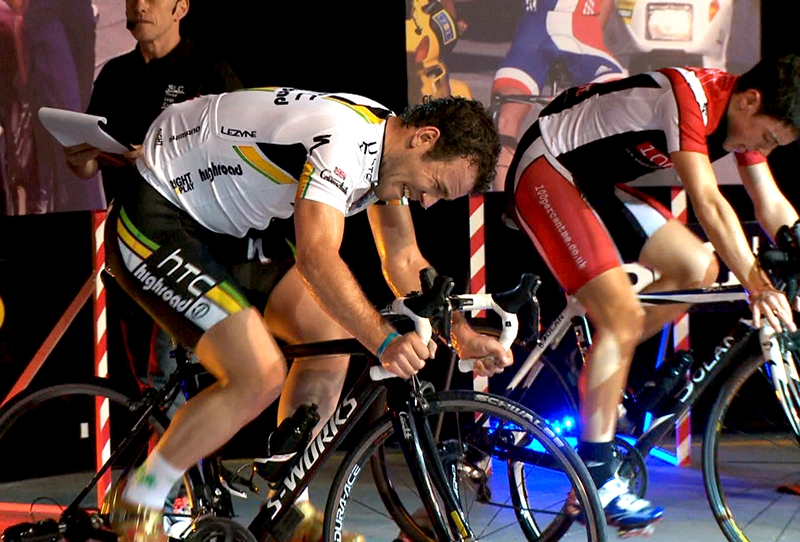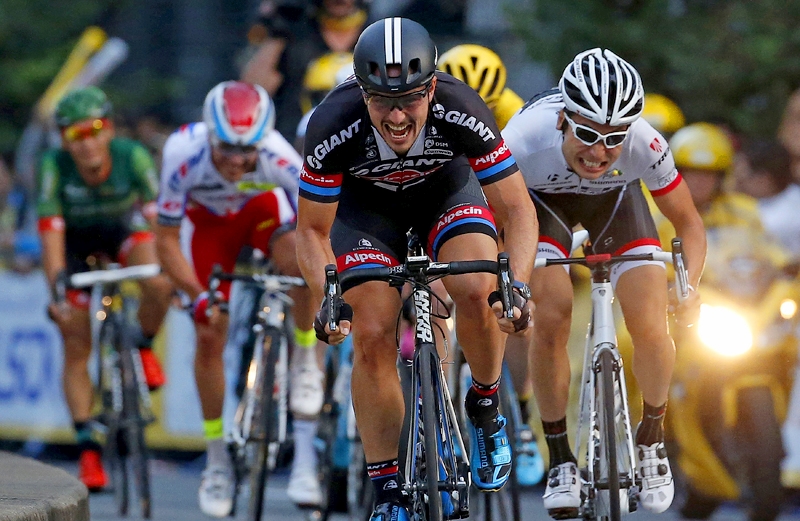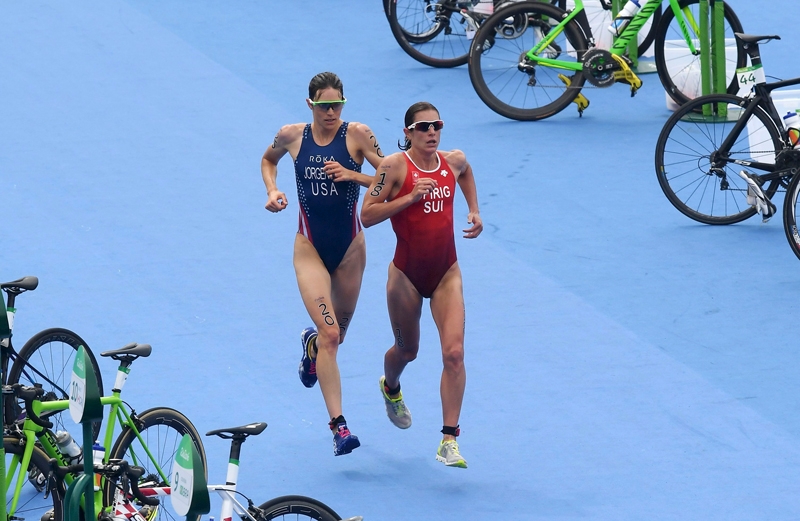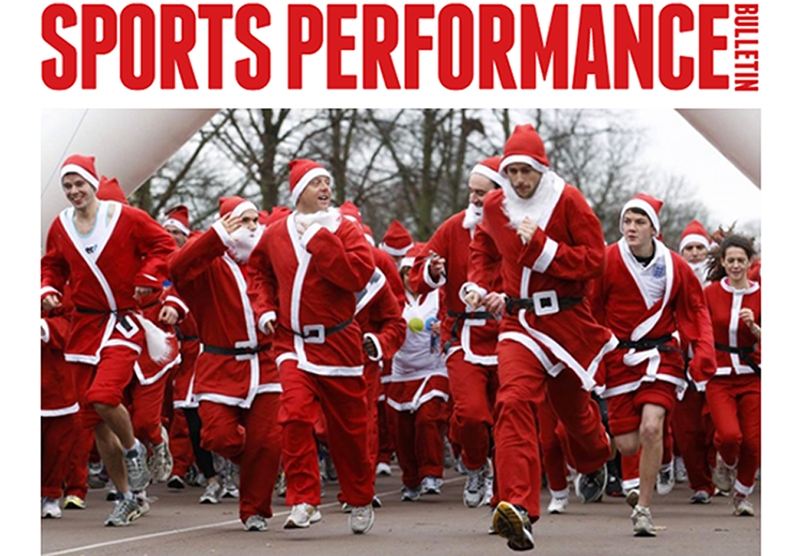You are viewing 1 of your 1 free articles. For unlimited access take a risk-free trial
Interval training: little and often or longer infrequent sessions for maximum gains?

How often should you interval train for maximum fitness gains? Andrew Hamilton takes a look at some brand new research and comes up with surprising conclusions
Regular Sports Performance Bulletin readers will be more than aware of the huge amount of recent research into using high-intensity interval training as a method of improving fitness. The reason is simple; a growing number of studies have shown that regular sessions of interval training can produce significant fitness gains in less time and with less effort than a higher volume of steady-state endurance training. Even better, the benefits of interval training can be realised by all sportsmen and women – not just elite athletes. Indeed, recreational athletes who introduce intervals to a training schedule stand to gain even more than more advanced level athletes (who will almost certainly already be utilizing interval training in their training programs).The perfect interval recipe
When the topic of interval training comes up, it’s natural to discuss how long and how hard each work interval is, and how many interval repeats are performed. That’s not surprising because we know that it’s the shorter bursts of relatively intense work that are responsible for the fitness and performance benefits interval training brings. The length of the rest periods in between each interval is also important, and how much rest is taken in relation to the amount of time performing the actual intervals (see this article for a more in-depth discussion on rest intervals). For example, performing 30-second intervals with 60 seconds of rest in between yields a 1:2 work/rest ratio. The same 1:2 ratio could be achieved using 3-minute work intervals and 6-minute rest intervals, but the physiological effects of performing 3-minute intervals would be different to using much shorter, more intense 3—second intervals.Overall, scientists have determined that there are six factors determining the overall ‘recipe’ for interval training. These are(1,2):
- Total workload of a session
- Duration of each interval
- Interval intensity
- Recovery duration
- Recovery type (ie active or passive)
- Total interval training time per week
But while there’s a lot of data about the fitness and performance benefits interval training regimes, one thing that’s far less clear is how best athletes can integrate their interval training into their weekly endurance training. There is some useful data showing that reducing your endurance training volume slightly to accommodate interval sessions is likely to result in fitness gains, despite the slight reduction in overall training volume, particularly for those who are not already performing regular interval training sessions(6). And research on swimmers has found that increasing training intensity and reducing training volume for 12 weeks can reduce general stress and increase overall recovery levels in competitive swimmers (and by implication, other athletes too)(7).
How often for intervals?
Despite the extensive research into interval training, there’s still one aspect of training that is unknown – the optimum number of high-intensity interval training sessions per week in order to maximally stimulate training adaptations. Retrospective data collected from world-class endurance athletes shows that they typically perform one or two three interval sessions per week, often along with another type of high-intensity session (eg a short but maximal session)(8). But is there any science to support this approach? That’s the topic of a newly published and fascinating study by Norwegian researchers into the optimum interval-training frequency per week(9).Unlike almost all of the previous research in this area, this study did not manipulate interval lengths, interval intensities or the duration/type of recovery in between intervals. Instead it investigated how the distribution of a set amount of interval training workload across the week affected the subsequent fitness gains. In particular it asked the question: ‘is it better to perform more frequent but shorter sessions of intervals (4 per week) or fewer, longer sessions (2 per week)?’
To carry out this study, the research recruited 20 elite cross-country skiers and biathletes, who were randomly divided into two groups. Each group then underwent a 12-week training intervention:
- High frequency: Shorter but more frequent interval sessions (4 per week) – this group performed twice-weekly sessions of 4 × 8 minutes in zone 3 separated by 2-minute recoveries (total time 64 minutes) and two sessions of 3 × 12 minutes in zone 3 with 3-minute recoveries (total time 72 minutes)
- Low frequency: Fewer but longer interval sessions (2 per week) - During the 12-week intervention period, this group completed one session per week of 8 × 8 min intervals in zone 3 with 2-minute recoveries (total time 64 minutes) and one session of 6 × 12 min intervals in zone 3 with 3-minute recoveries (total time 72 minutes).
Figure 1: Comparison of total training loads in high and low-frequency groups

Weekly training load in the 12-week intervention period; the figure shows the distribution of endurance training in the different intensity zones (I-1 to I-5) and duration of strength training in the high- and low-frequency group (HF- and LF group). There were no statistically significant differences between the groups.
What they found
The main findings were as follows:- Time-Trial Performance - In the LF (twice per week) group, seven out of nine subjects showed an improvement in rollerski time-trial performance following the intervention, with a median time-trial time that was statistically significantly lower post-intervention. In the HF (four times per week) group, no statistically significant improvement between pre- and post-test was observed.
- Workload at anaerobic threshold - The percentage of maximum oxygen uptake (VO2max) the athletes were able to sustain before reaching anaerobic threshold (lactate levels of 4.0 mmol/L – ie when severe fatigue sets in) was significantly increased after the intervention period in the LF group but not in the HF group (85.4% VO2max LF vs. 80.7% HF).
- Exercise economy (efficiency) - A statistically significant reduction in oxygen consumption during submaximal exercise at 10.9 km/h and 5% incline was observed in the LF group, but not in the HF group at post-test. (NB – lower oxygen demand for a given workload is beneficial, resulting in reduced physiological stress and increased endurance). At this exercise intensity, the average oxygen demand was 39.6mL/kg/min in the LF group vs. 41.0mL/kg/min in the HF group.
- Submaximal heart rates - There was a statistically significant reduction in submaximal heart rates for the LF group at 10.9 km/h and 5% incline but none for the HF group (134bpm vs. 144bpm).
Practical implications
The main finding in this study was that performing two longer high-intensity interval sessions per week for a period of 12 weeks, resulted in significant improvements in time-trial performance, whereas there were no statistically significant improvements in time-trial performance, or any other measure of performance in the HF group, who performed the same weekly volume of high-intensity training as the LF group - but distributed among four shorter sessions.The time trial performance gains likely resulted from a simultaneous improvement in the maximum oxygen consumption the athletes were able to achieve before reaching anaerobic threshold, and also in exercise economy (read more about exercise economy in this article). But why should fewer longer sessions confer an advantage in these key markers of performance over shorter, more frequent sessions? One theory advanced by the researchers was that the longer time between training sessions in the LF group may have allowed the athletes to recover better and more effectively “absorb” the training – ie the muscles had more time to respond with appropriate training adaptations.
This makes sense intuitively; two sessions per week allows one 72-hour and one 96-hour recovery period. However, in the 4 x week scenario, the longest recovery period is 48 hours with one recovery period of just 24 hours. These findings also fit with the current endurance training philosophy in Norwegian elite sport and with the “best practice” observed by many of the world’s best endurance athletes(10). We can also perhaps take this principle of ‘longer but fewer interval sessions’ and apply it elsewhere. This study looked at elite athletes who were highly trained and recover rapidly; however, recreational athletes do not tend to have the same recovery capacity as their elite counterparts. That being the case, those who are relatively new to interval training might discover that they get better results from one longer interval session per week with a doubled up number of intervals rather than two or three shorter ones, when recovery periods may not be sufficient. But because we don’t yet have the data on that, we cannot make that a solid recommendation. However, if you find you’re constantly struggling to fit interval sessions into your weekly program, you could do worse than giving this strategy a try!
References
- Sports Med. 2002, 32, 53–73
- J. Strength Cond. Res. 2007, 21, 188–192
- J. Strength Cond. Res. 2013, 27, 1974–1980
- J. Med. Sci. Sports 2013, 23, 74–83
- Sports Med. 1986, 3, 346–356
- Scand J Med Sci Sports 2010; 20 Suppl 2: 1–10
- Eur J Sport Sci. 2016;16(3):344-9
- J. Strength Cond. Res. 2009, 23, 2548–2554
- Int. J. Environ. Res. Public Health 2020, 17(9), 3190
- Sport Sci. 2009, 13, 32–53
Newsletter Sign Up
Testimonials
Dr. Alexandra Fandetti-Robin, Back & Body Chiropractic
Elspeth Cowell MSCh DpodM SRCh HCPC reg
William Hunter, Nuffield Health
Newsletter Sign Up
Coaches Testimonials
Dr. Alexandra Fandetti-Robin, Back & Body Chiropractic
Elspeth Cowell MSCh DpodM SRCh HCPC reg
William Hunter, Nuffield Health
Keep up with latest sports science research and apply it to maximize performance
Today you have the chance to join a group of athletes, and sports coaches/trainers who all have something special in common...
They use the latest research to improve performance for themselves and their clients - both athletes and sports teams - with help from global specialists in the fields of sports science, sports medicine and sports psychology.
They do this by reading Sports Performance Bulletin, an easy-to-digest but serious-minded journal dedicated to high performance sports. SPB offers a wealth of information and insight into the latest research, in an easily-accessible and understood format, along with a wealth of practical recommendations.
*includes 3 coaching manuals
Get Inspired
All the latest techniques and approaches
Sports Performance Bulletin helps dedicated endurance athletes improve their performance. Sense-checking the latest sports science research, and sourcing evidence and case studies to support findings, Sports Performance Bulletin turns proven insights into easily digestible practical advice. Supporting athletes, coaches and professionals who wish to ensure their guidance and programmes are kept right up to date and based on credible science.
